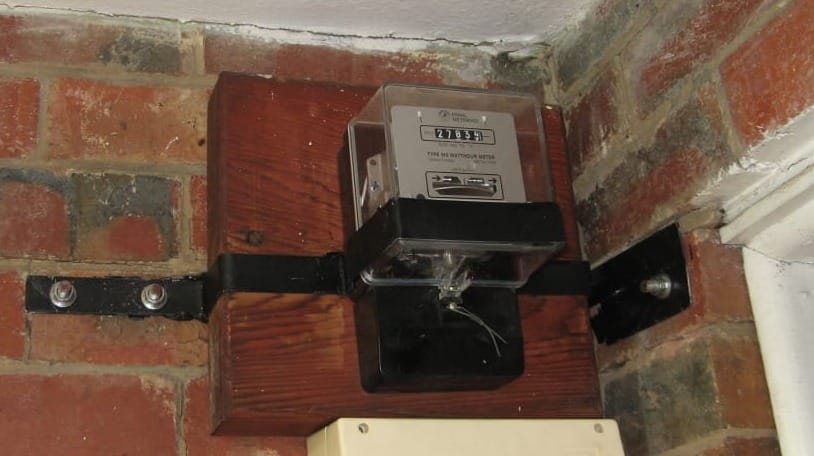Smart Meters are coming
The Australian Energy Market Commission (AEMC) is officially starting its Accelerating Smart Meter Deployment (ASMD) reforms. If you don’t already have a smart meter, you will by the end of 2030.
The Australian Energy Market Commission (AEMC) is officially starting its Accelerating Smart Meter Deployment (ASMD) reforms. If you don’t already have a smart meter, you will by the end of 2030.

Australia’s electricity market is undergoing a significant transformation. By 2030, all households and small businesses in the NEM states will have their old 'accumulation' electricity meters replaced with smart meters, as mandated by the Australian Energy Market Commission (AEMC) through the Accelerating Smart Meter Deployment (ASMD) reforms.
Smart meters are digital devices that automatically record your electricity usage in near real-time and communicate this data directly to your energy provider. Unlike traditional meters, smart meters eliminate the need for manual readings and support two-way communication with the grid.


Smart meters enable the measurement of energy usage by time, which is a crucial enabler for all kinds of retail energy innovations.
Smart meters can, in theory, also provide consumers with real-time access to their energy usage information. This information facilitates energy services that help consumers optimise their energy use and save money on bills.
Some of the benefits include:
The smart meter upgrade applies to: Residential and Small to medium business properties in NSW, ACT, QLD, and SA
Overview of Current Smart Meters Installed
| Jurisdiction | Number of smart meters | % Smart meters |
|---|---|---|
| ACT | 93.344 | 40.27% |
| NSW | 1,929,057 | 39.17% |
| QLD | 1,285,299 | 42.63% |
| SA | 488,325 | 46.49% |
| TAS | 279,296 | 78.06% |
| VIC | 3.247.638 | 99.12% |
If you still have an older “basic” meter, your electricity retailer or their metering provider will contact you when it’s time to upgrade. If you already have a smart meter, no action is needed.

Not a subscriber yet? What are you waiting for! Never overpay for energy again! Bill Hero automatically compares every bill to help keep you always on the best priced plan.
Following significant pushback on forced migration to demand tariffs, the AEMC has introduced a two-year explicit informed consent period, during which retailers must obtain explicit consent from customers to change their retail tariff structure after a smart meter is installed.
The customer's consent lasts for two years, after which the retailer can update the retail tariff without requiring explicit informed consent. However, the retailer must still provide 30 days’ notice and a historical bill estimate to the customer. This safeguard is a transitional rule and will be in effect from December 1, 2025, until May 31, 2031.
In addition, retailers must also provide smart meter customers with a flat tariff option in those jurisdictions that have adopted the measure through local state-based regulatory instruments.
In September 2024, Queensland adopted measures for electricity retailers to offer a flat tariff structure, making the rule effective in this jurisdiction.
There are no upfront costs if your meter is being replaced as part of the national ASMD rollout.
Fees may apply if you request a meter upgrade outside of the scheduled rollout or if your meter site requires any additional electrical works such as switchboard upgrades or asbestos removal.
The national rollout follows a staged schedule through the Legacy Meter Replacement Program (LMRP):
| Date | Change |
|---|---|
| July 1, 2025 | Accelerated rollout begins - retailers start replacing meters proactvely |
| December 1, 2025 | New rules apply for installation processes and defect resolution |
| July 1, 2026 | Retailers begin replacing all legacy meters |
| November 30, 2030 | All basic and non-compliant meters must be replaced by this date |
In October 2024, the AEMC published a consultation paper on Energy Consumer Australia’s separate rule change request to improve real-time data access for customers. The final determination for this rule change is expected in August 2025.
Currently, accessing real-time consumption data from a smart meter is challenging for both consumers and third parties seeking to act on their behalf. This is mainly because negotiating access with metering service providers (MSPs), who control the data, can be difficult.
To address this, consumers and third parties often install their own digital meter readers or current transformers near the meter, which can be a hassle and an additional expense for consumers.
In principle, there is no reason why consumers should not be able to directly access the data from their own meter.
On 30 January 2025, the Australian Energy Market Commission (AEMC) published a directions paper proposing a framework to enable access to real-time data from the meter.
The paper proposes the following:
Got opinions about the smart meter rollout? Have your say in the comments, but please first read and understand our Community Guidelines.

Savings as a Service is the blog site and newsletter from Bill Hero. Subscribe now and get your energy savings tips and information delivered fresh to your inbox every month.